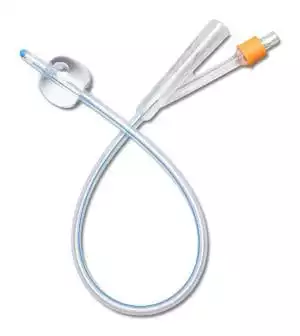Foley Catheter Care
In urology, the Foley catheter is commonly used to relieve and aid patients with a number of bladder, urethral, and genitourinary conditions. This easy-to-use device prevents additional damage while also allowing patients or their medical care teams to monitor urinary color, output, and contents. It is a common post-surgical aid for both men and women who undergo surgery on the bladder, kidneys, genitals, prostate, and lower abdomen as it effectively maintains drainage in the presence of swelling or infection.
Caring for your new Foley catheter correctly is extremely important. Your medical care team will provide you with steps to take for your individualized needs. The information in this care sheet is intended as a supplement to that advice, and while helpful, should not be used as a replacement for medical advice or physician intervention if problems arise.
Foley Catheter Care Tips
For our patients, the first day and night after Foley catheter placement is often the most challenging. Minor irritation is common, but even when it isn’t present, the feeling the catheter induces can be slightly uncomfortable until you become accustomed to the sensation.
Follow these Foley catheter care tips below to manage your Foley catheter from day one until you have it removed.
Managing Pain
Slight burning or even out right irritation is common. If this happens to you, try lubricating the entry point at the urethra with a dab of lubricating jelly. Check with your physician or surgeon if you have stitches or wounds near the entry point. Your physician may prescribe numbing creams to relieve any irritation.
Serious Pain
If pain becomes unbearable, contact your care team immediately. This is especially true if you notice a serious decrease in urine output at the same time. This can indicate a kink or blockage in the tubing. Your care team may remove and replace the Foley catheter, or they may flush the tubing in-office.
Showers and Baths
Do not shower or bathe until your physician gives you permission to do so. Bathing can introduce bacteria to the urethra that may create a urinary tract infection by entering through microscopic tears in the urinary tract.
Shower daily if you’re feeling stable and able to stand for at least 15 minutes at a time. If you experience weakness or dizziness, use a shower chair for extra stability.
If you are unable to shower, a sponge bath can be used instead. Cleanse the area around your urethra, groin, and genitals with warm water. You can use a mild soap around the groin, but both males and females should avoid placing soaps directly onto the penis, glans, or outer and inner labia.
Securing your Foley Catheter
Your medical care team will show you how to secure your Foley catheter. The best way to keep it in place is to tape it to your lower leg around the side of your calf. Use surgical tape to prevent removal pain.
If you are unable to secure your Foley catheter to your lower leg, you can also secure it around the lower thigh. Some patients prefer this method as it reduces the need to bend down to drain the bag. However, you must keep the bag lower than your bladder in order for the device to work.
Draining Your Foley Catheter
During the day, you’ll use a smaller bag for your Foley catheter. Dump this bag whenever it becomes 75 percent filled. Never overfill your Foley catheter bag; it can burst or cause dangerous bladder backups that may induce pain.
To dump the bag, begin by washing your hands well unsecure it from your abdomen or leg. Lift it up over the toilet and unscrew the cap at the top end. Tilt it and dump out the urine, then re-secure the cap.
Avoid touching the cap with your fingers at all times. If you do, use an alcohol swab to gently clean the cap and its seating before replacing the bag.
To change your night bag, follow the same steps. Because the night bag is larger, it may also be heavier. Don’t be afraid to ask a caregiver for help or assistance. If needed, you can use a bucket to dump the night bag out while seated.
Caring for your Foley catheter correctly isn’t just an option, it’s vital. Follow these Foley catheter care tips to ensure proper use. Incorrect use or maintenance can interfere with surgical healing or even cause additional infections that may be difficult to treat. If you see signs of blood, tissue, or a lack of urinary output at any point in your treatment, contact your medical care team for advice. For everyday Foley catheter care questions, call the pharmacy for a consultation.
Showing the single result
-
View Product
Foley Catheter Care #1

 info@burtsrx.com
info@burtsrx.com
